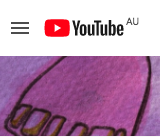~ * ~
This article was written by Ann Strecko Koeman
As a multi tasking mixed media artist I find the need to use multiple sources to market my work and to earn an income. I make different kinds of crafts and art which I try to sell through word of mouth, my ETSY store, and in my booth at a local flea market. I also teach various art making techniques in a local scrapbook store. Now when I teach I have another customer base to which I can advertise about my wares in my stores. When I am in my booth I advertise that I teach as well. In addition to the paid work I write, run a blog, and do Design work for other blogs. All of these are more ways to market myself.
Operating a small business such as my craft booth at a local indoor flea market is different from my other selling experiences and I am learning about the pros and cons as I go. I am going to focus on the positives right now which are many. The market is another place for me to advertise what I am capable of making. There I can bring my new ideas the good ones and the not so good. I can learn what people like and don’t. I do get more of a learning experience than I make money most of the time, but that is valuable too.The other things I do is sell supplies that I have either grown tired of or have too many of. Now this also allows me to buy more supplies at wholesale prices which in turn makes me save some money on my own art making.
My booth also allows me to make new contacts and gather some interesting material for writing a book one day! The other benefit of operating with in a flea market is that I can shop for some great stuff myself, and usually at a very good price. The other vendors know about me and sometimes bring me used or new supplies they come across in their own treasure hunting. I also get customers who ask if I will do custom work, repairs, or teach . These are all great opportunities and definitely keep things interesting.
Teaching is another opportunity that I overlooked for too long. Now I have learned about the opportunity for more exposure and also gained new knowledge. Besides earning an income from teaching and advertising my work, being part of a store’s creative team has given me access to new materials and a very much appreciated discount whenever I teach. Through this experience I meet new people which leads to other possibilities for teaching and selling.
In addition to the paid work I gain a lot of exposure from participating in social media. I run my own blog ~ Ann Makes, I write and design for other blogs as well as Mixed Media Art. Sometimes this enables me to not only gain valuable experience and make new contacts but free products and discounts to use for more art making.
~*~*~*~*~*~*~*~*~*~*~*~*~*~*~*~*~*~*~*~*~*~*~*~*~
Ann Strecko Koeman is a Mixed Media Artist living and working near Ottawa, Ontario Canada. She is a wife and the mother of two teenage boys. She loves to work with lots of medias from paints to fabrics, papers to metals, used to new, and everything else! Her blog is Annmakes and can be seen at annmakes.blogspot.com
~*~*~*~*~*~*~*~*~*~*~*~*~*~*~*~*~*~*~*~*~*~*~*~*~
.
.




















Recent Comments